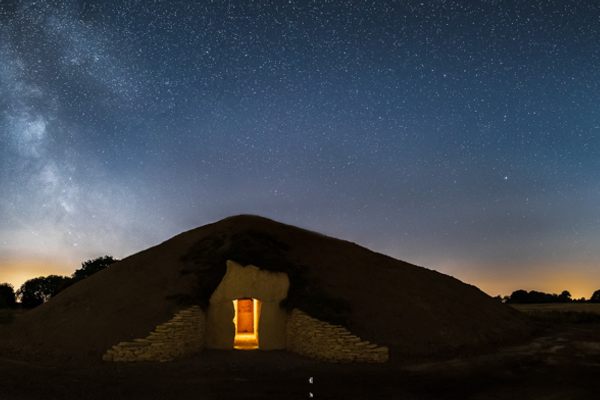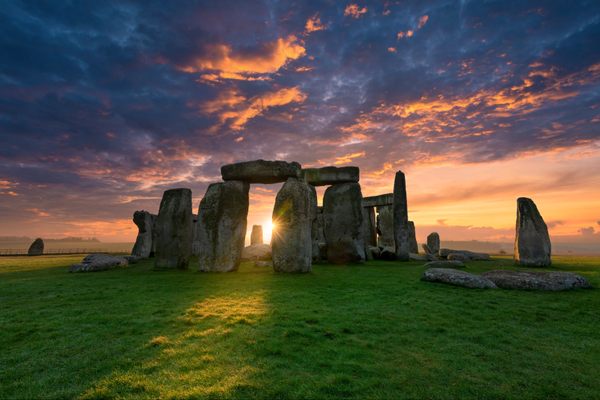Prehistoric People Built Little Artificial Islands in Scottish Lochs
Researchers nudged the construction date of some these landmasses, known as crannogs, back to the Neolithic period.

Lochs across Scotland are speckled with small, flat islets, known as crannogs. These may be rocky, or peaty, or studded with trees, and at first glance, “some people would think they are natural,” says Duncan Garrow, an associate professor of archaeology at the University of Reading. “However, in some cases they have obvious walls and causeways, which show they are man-made.” These little bits of land have long intrigued archaeologists, because in addition to being surrounded by water, they’re immersed in mystery. Researchers are still working to pinpoint precisely when humans lugged stones to build them, and why.
While the vast majority of Scotland’s several hundred crannogs haven’t yet been studied in great detail, researchers once believed that the first examples dated back to the Iron Age. Now, in a new paper published in the journal Antiquity, Garrow and his co-author, the University of Southampton archaeologist Fraser Sturt, report that some of these crannogs in the Outer Hebrides—islands beyond the west coast of mainland Scotland—are several thousand years older. Some of these islets seem to have been built during the Neolithic era—even before Stonehenge’s rocks were nudged into place over in England.

As Garrow and Sturt tell it, the notion that Neolithic crannogs might exist in Scotland first took shape during the 1980s, when researchers excavating Eilean Domhnuill came across some Neolithic pottery. For a while, that site seemed to be an anomaly. Then, in 2012, Chris Murray, a former Royal Navy diver, descended into the water near Lewis, the largest landmass in the Outer Hebrides, and came across some Neolithic pottery strewn nearby. He looped in local conservation officials, and, using Google Earth, they identified other islets where they could go see what they could rustle up. Several of these subsequent dives also turned up other well-preserved fragments of similarly prehistoric pottery—sometimes just a single vessel, other times, several dozen.
In 2016 and 2017, with Murray’s help, Garrow and Sturt set out to learn more about the islets around Lewis. They used combinations of sonar, underwater diver surveys, aerial photography, GPS, coring, and excavation to learn more about what the places were made out of, and when they were built. To approximate the age of the crannogs, the team radiocarbon dated some of the objects found nearby. Fragments from the islets of Arnish, Bhorgastail, Duna (Ranish), and Langabhat all point to people first building and visiting them during the Neolithic period, between 3640–3360 B.C.

Many crannog mysteries remain, and the largest of those is pretty fundamental: What the heck were they used for? Garrow and Sturt aren’t the only ones wondering.
The team behind the Living on Water project—a collaborative effort funded by Historic Environment Scotland to document an Iron Age crannog in Loch Tay—has noted that the reason people built and used these places “remains stubbornly unclear.” Chances are good that they varied across time and place. “We now have people building and doing things on artificial islands in Lewis in the Neolithic, and then there is a 2,000-year gap and people begin doing it again, and this time across all of Scotland, in the Early Iron Age, sometime between 800-400 B.C.” writes Michael Stratigos, a maritime archaeologist who studies crannogs and is working on the Living on Water project at Loch Tay, via email. “I am very wary to suggest Neolithic crannogs and Iron Age and later crannogs are part of the same tradition,” Stratigos adds. “We call them all crannogs, which is fine, but they are no doubt built by very different communities for very different purposes.”
Hauling and heaping 500-pound stones was no small feat, and Garrow and Sturt suggest that “such islets may well have represented substantial symbols for, and of, the communities that constructed them.” The authors note that each of the sites, isolated and monumental, “could also have been perceived as special places, their watery surroundings creating separation from everyday life.”
To pin down more details about what was going on at the Neolithic sites, and how they differ from later crannogs, Garrow and Sturt hope to find more examples. Stratigos isn’t so sure that they’ll turn up beyond Lewis, especially where researchers have already radiocarbon dated other sites to confirm that they sprung up during the Iron Age. But “it is definitely worth still looking,” Stratigos adds, and he suggests combing other places with similar geographies in the Outer Hebrides, as well as the Shetland Islands, farther north. For now, at least, we know that whatever Neolithic Scots were up to on some of those islets, it started much earlier than we thought.














Follow us on Twitter to get the latest on the world's hidden wonders.
Like us on Facebook to get the latest on the world's hidden wonders.
Follow us on Twitter Like us on Facebook